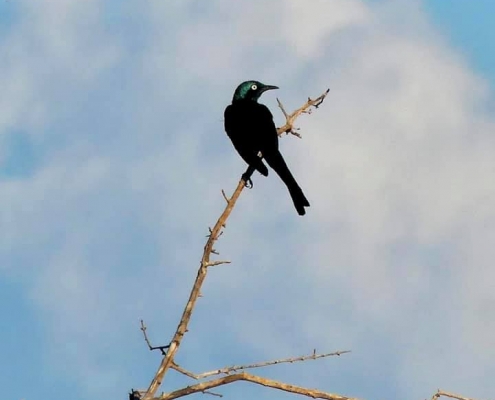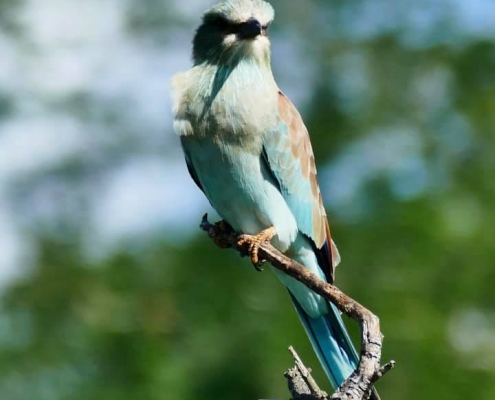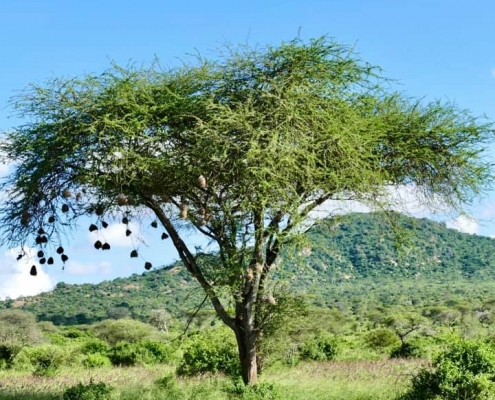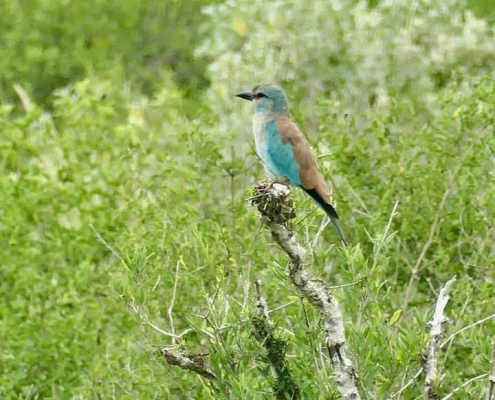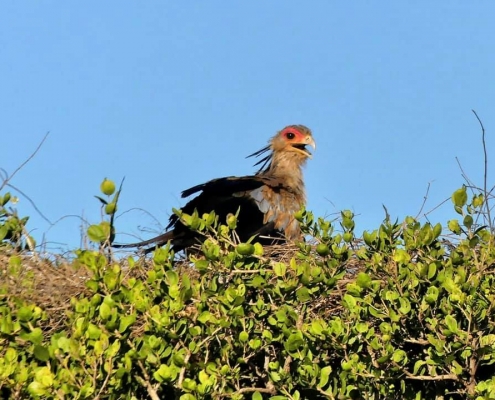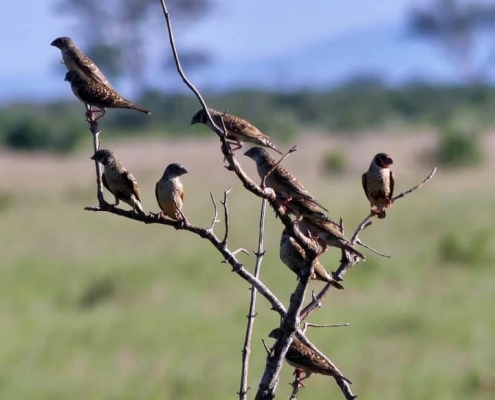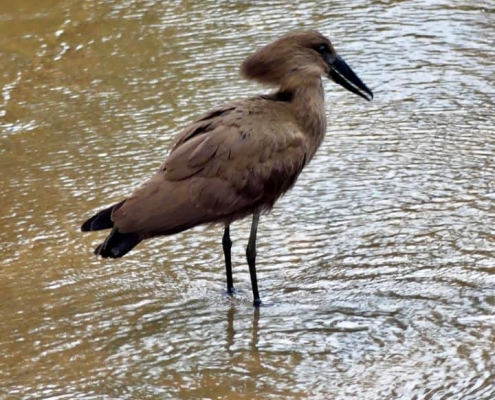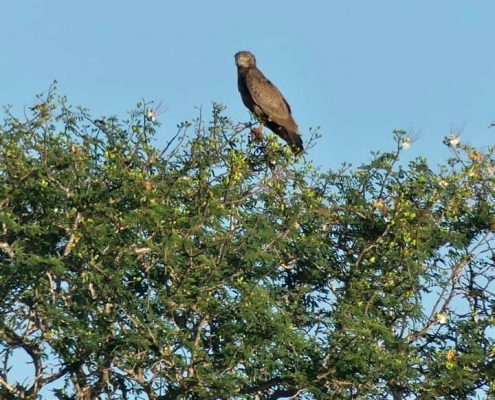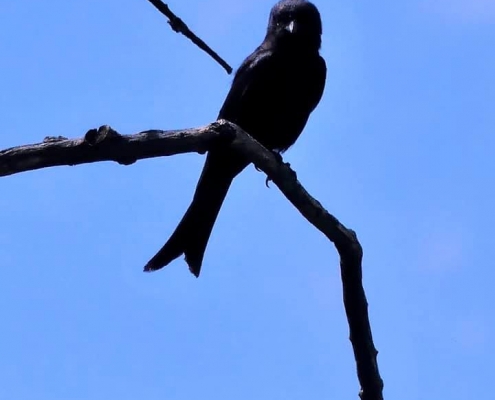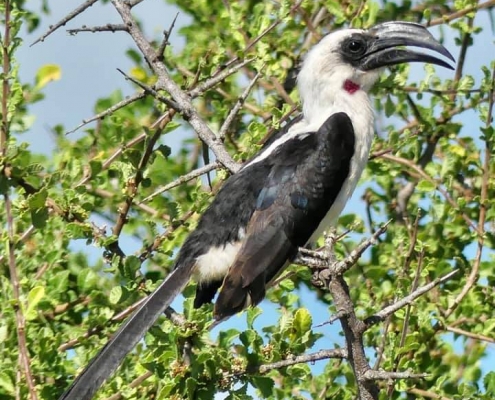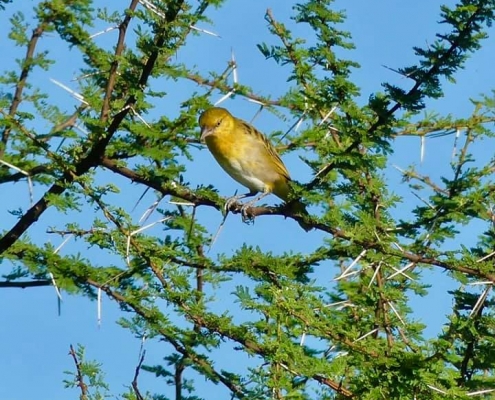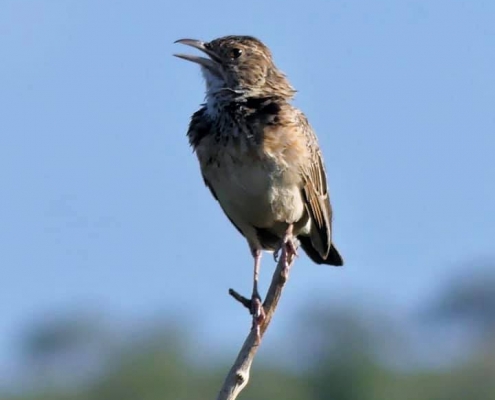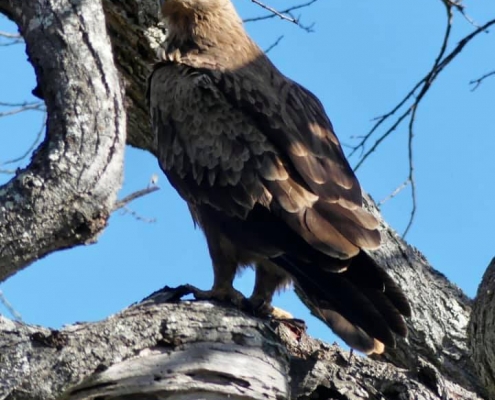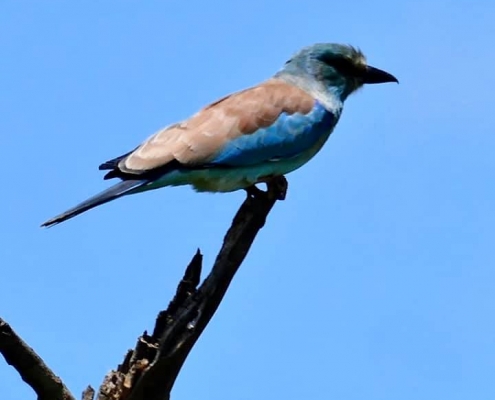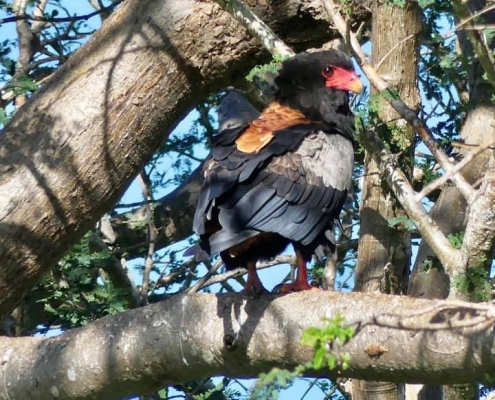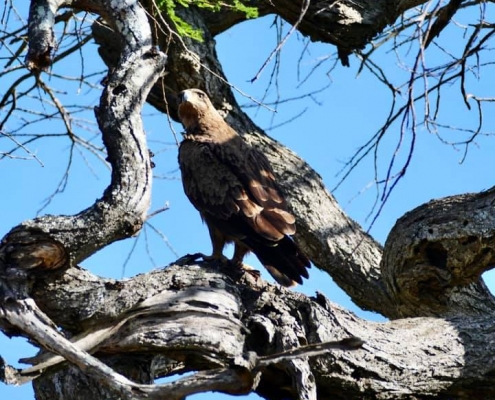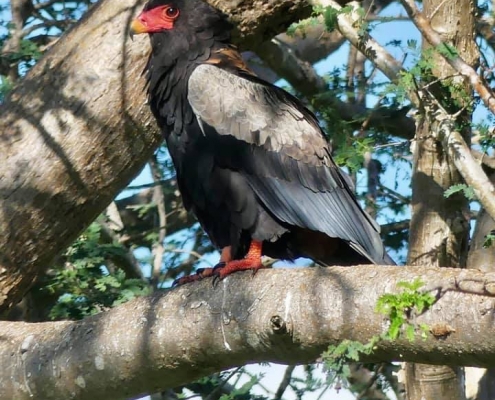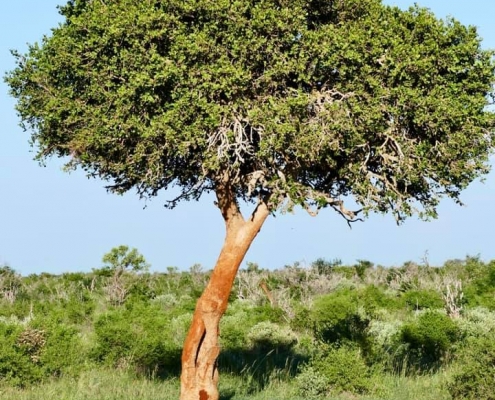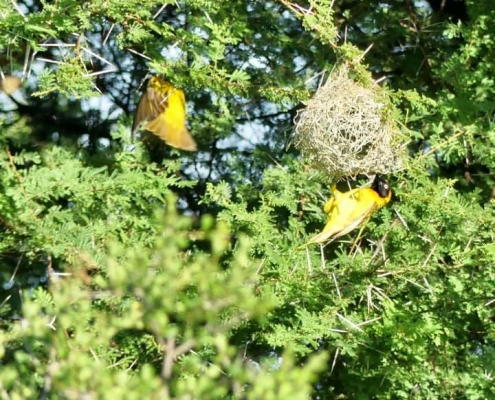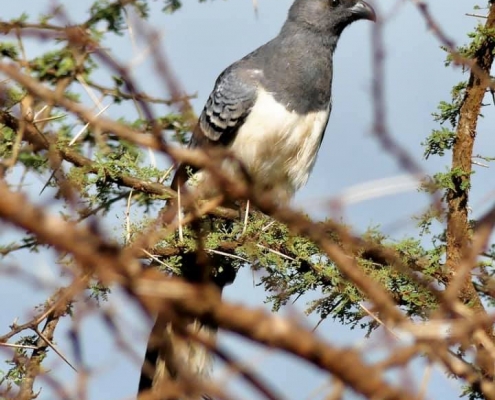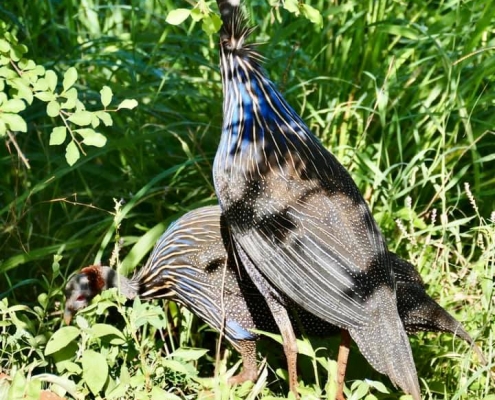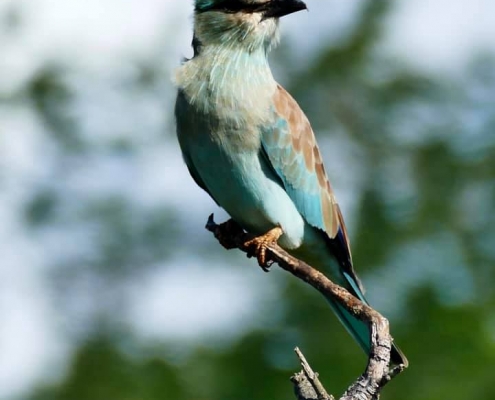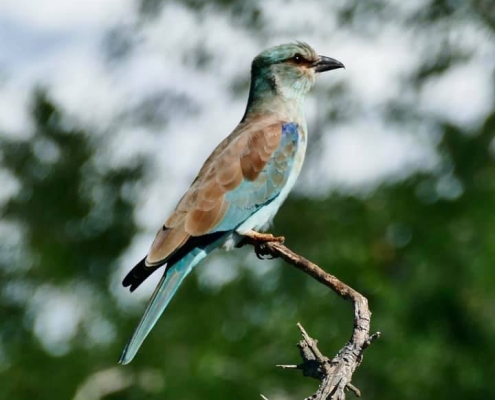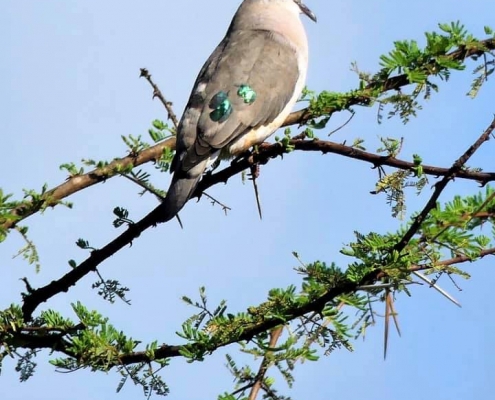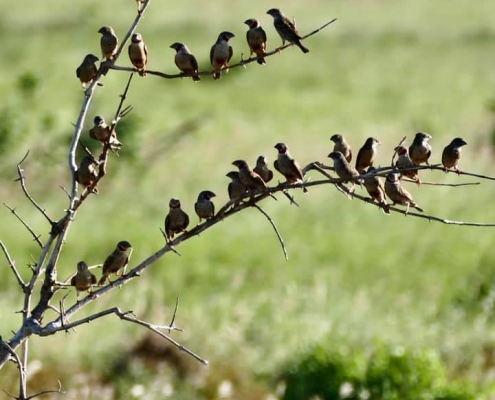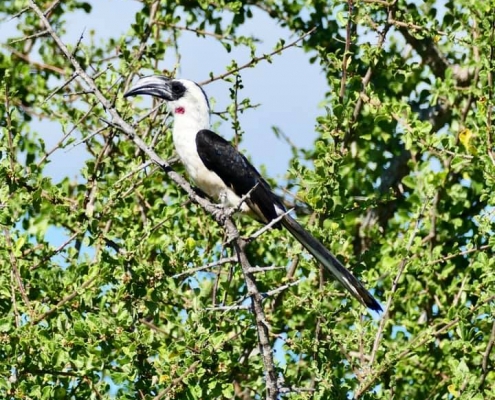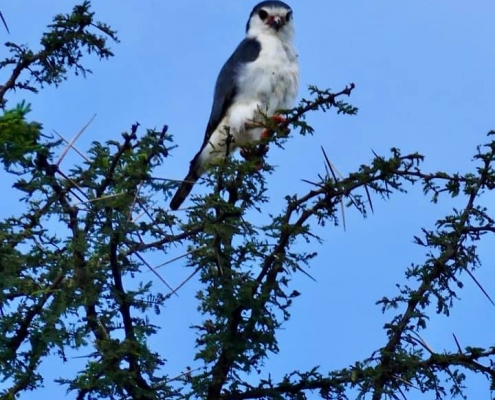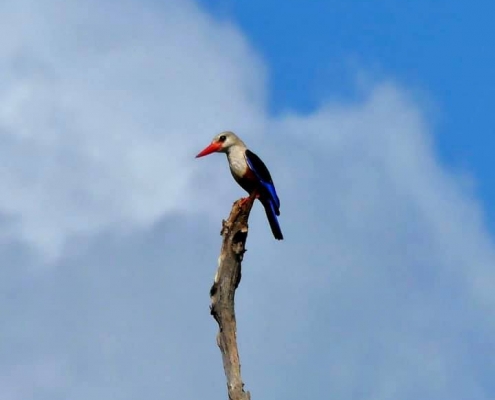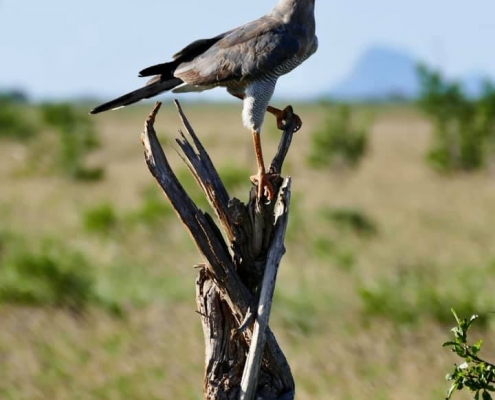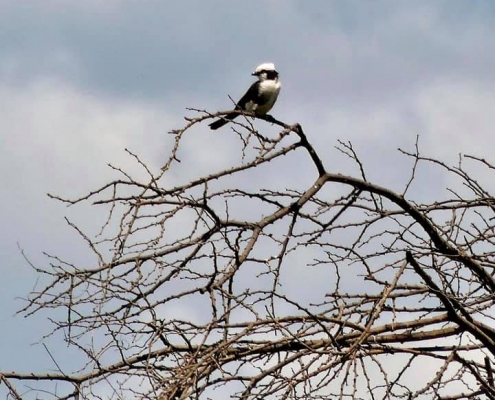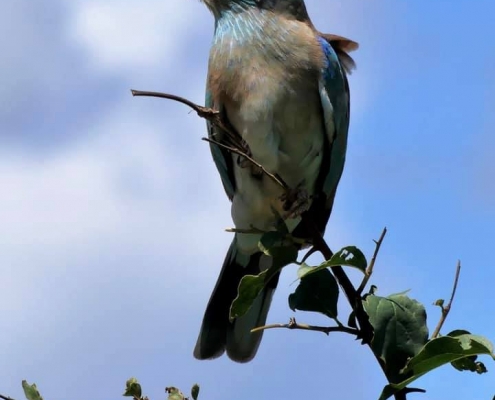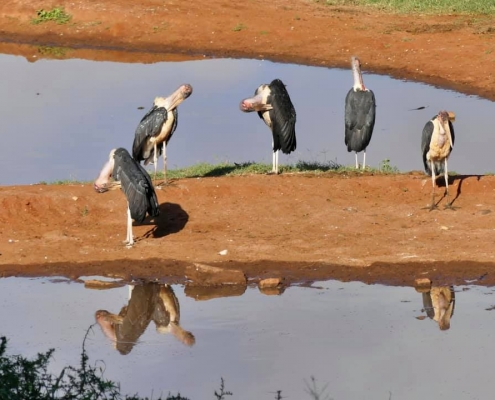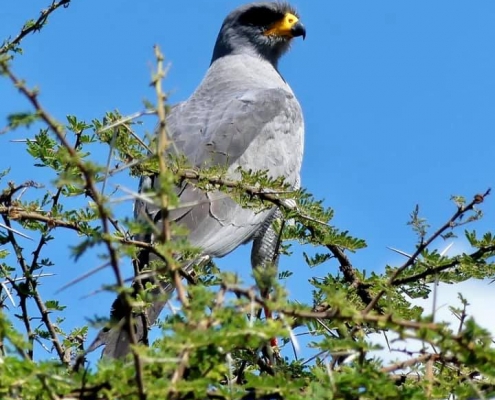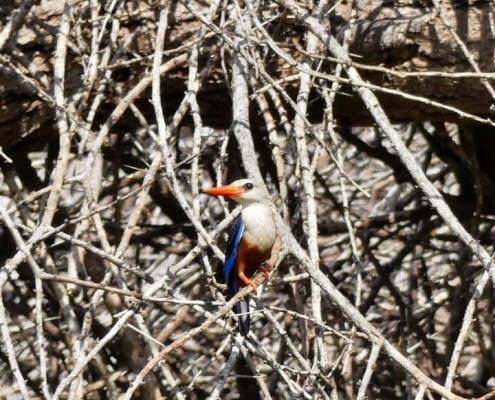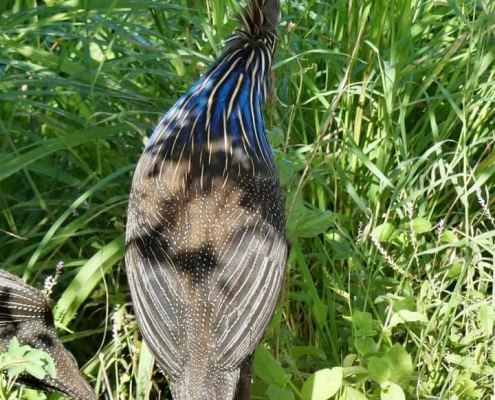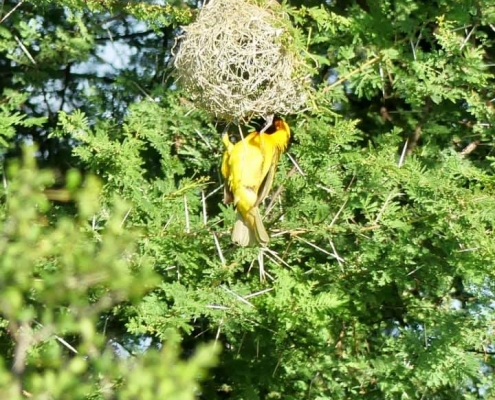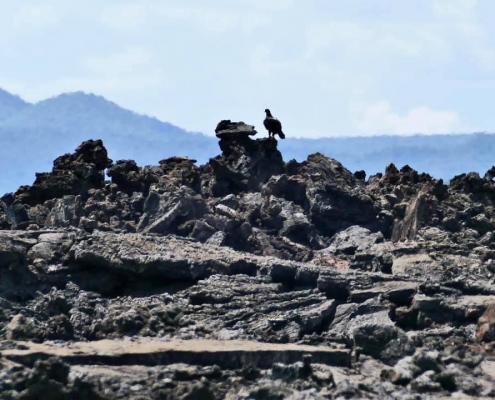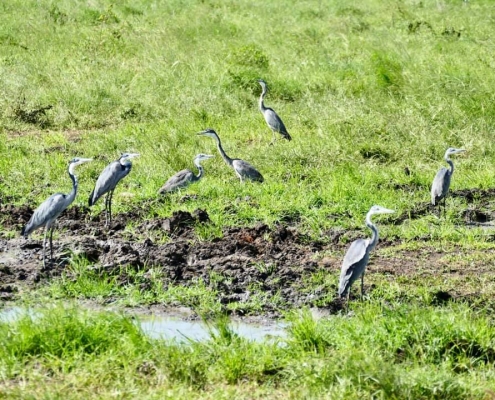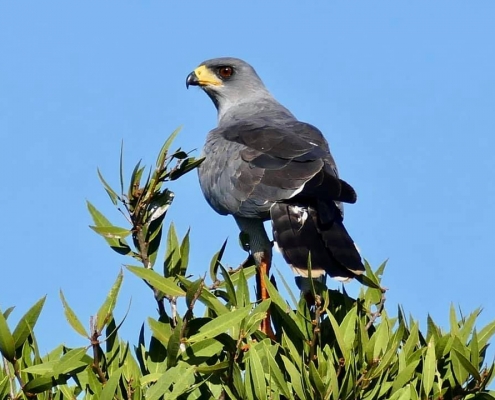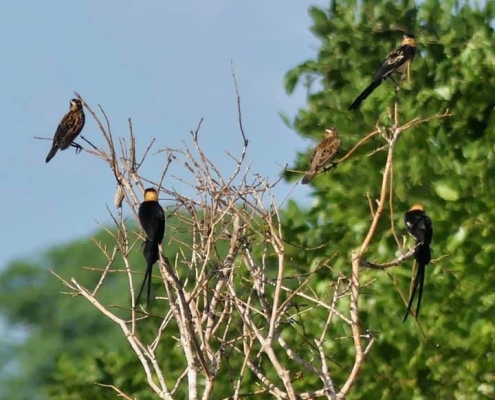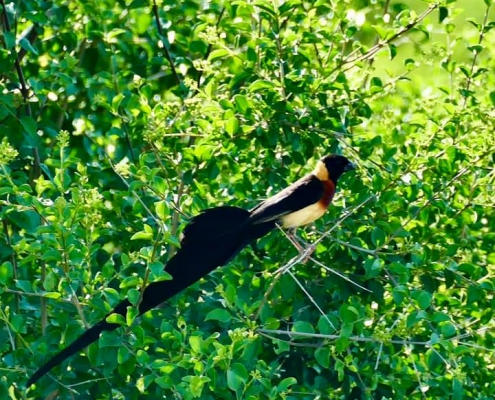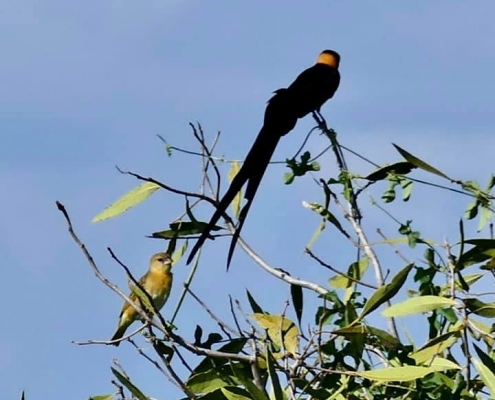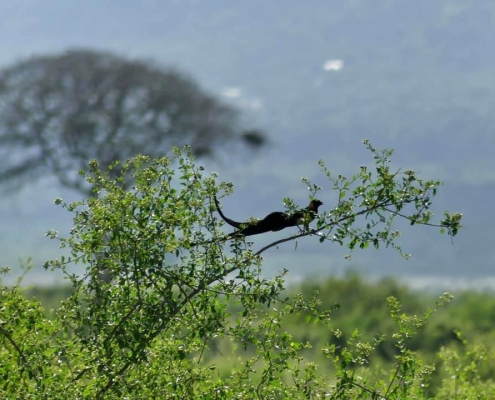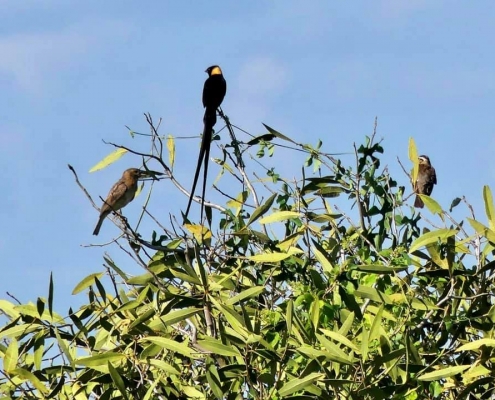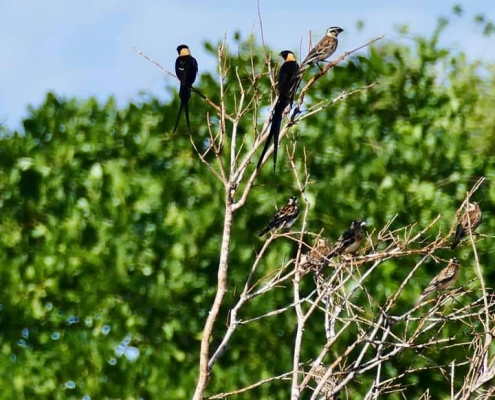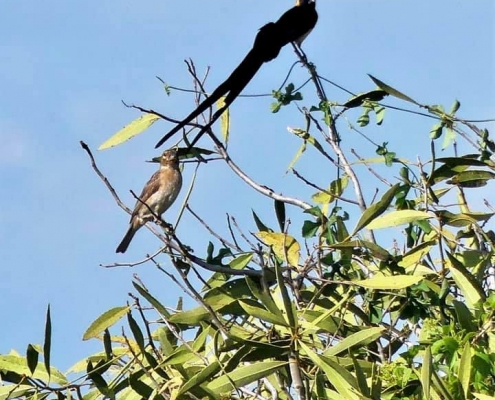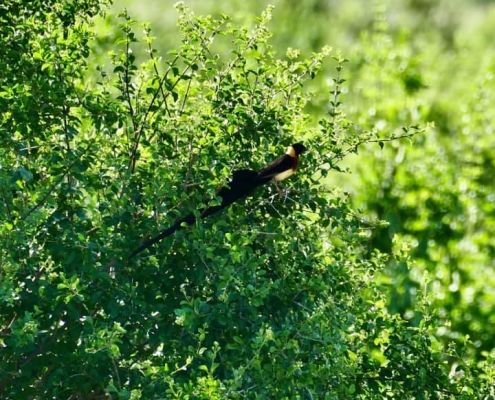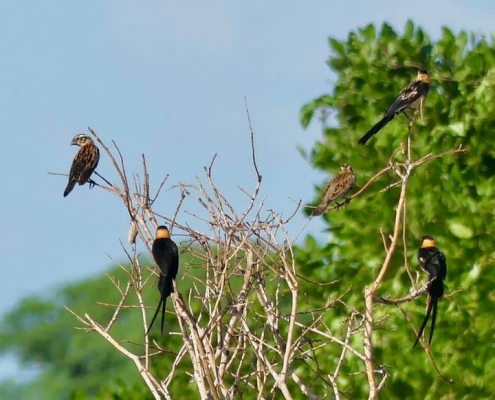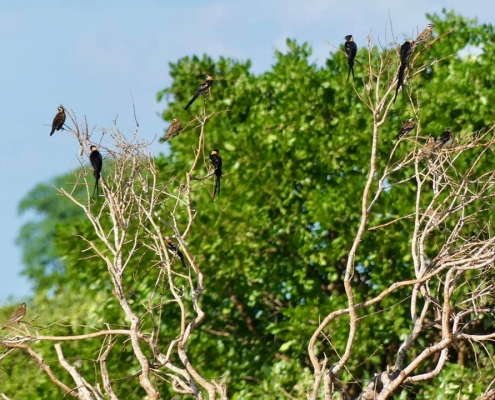Kenya: Tsavo East & West NPs – Birds
Both Tsavo West and Tsavo East delivered handsomely in terms of birdwatching. We saw a rare Verreaux’s eagle aka Black eagle, strange-looking Vulturine guinea fowl, and plenty of European rollers in their beautiful blue coloration. Also spectacular where the Other species included Fork tailed grongo, Greater blue-eared starling, Spectacled weaver, Jameson’s firefinch, White-bellied canary, Eastern chanting goshawk, African grey hornbill, Scarlet-chested sunbird, Emerald-spotted wood dove, White-bellied go-away bird, Pigmy falcon, Black-faced sandgrouse, Taita fiscal, Long-tailed fiscal, Grey-headed kingfisher, Yellow-necked spurfowl, Ruppell’s long tailed starling, and others. One bird from Tsavo East National Park deserves a separate mention – Long-tailed Paradise Whydah, it was so bizarre-looking. For most of the year, these birds are very unimpressive and simple, greenish-brown, and indistinguishable between males and females. But this all changes during the breeding season – males grow an elaborate tale that is three times their body size, up to 36cm. Their whole coloration changes as well – they get black heads and backs, rusty orange colored breasts, a bright yellow neck and shoulders, and white abdomen – a complete makeover for a bird that normally is just a finch (that’s what whydahs actually are). The bizarre facts don’t just stop with the breeding transformation – whydahs are brood parasites, that is they deposit their own eggs into the nests of other bird species where the chicks push out the host eggs and chicks and then are brought up by their host parents, unbeknownst to them until the chicks grow up.


